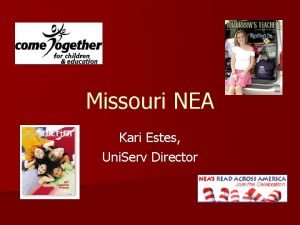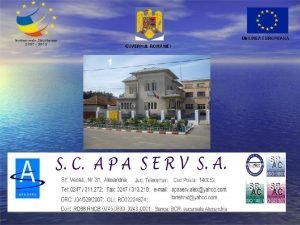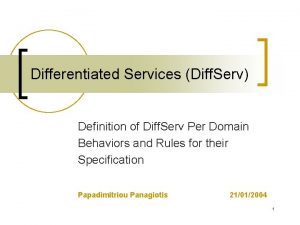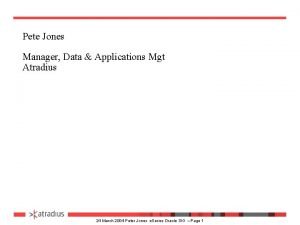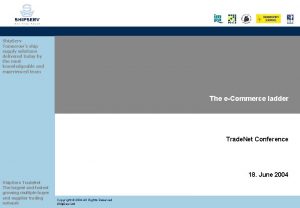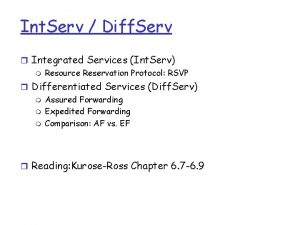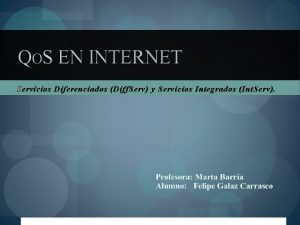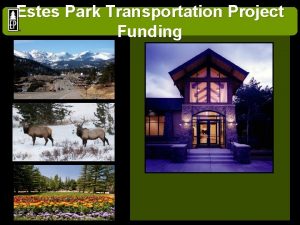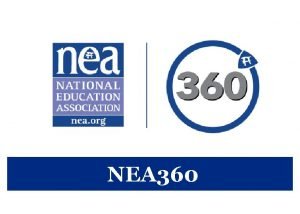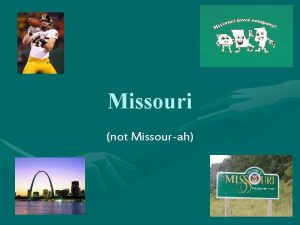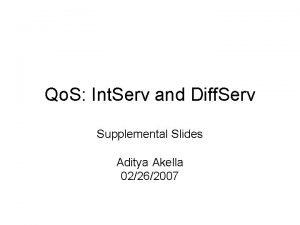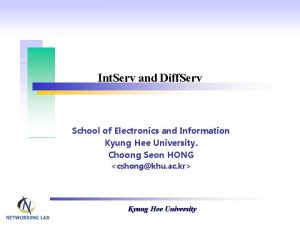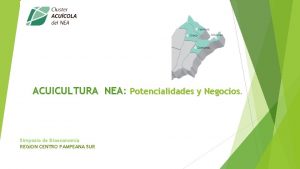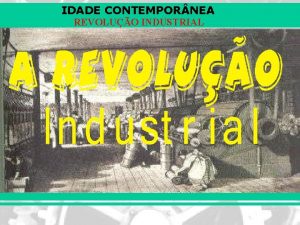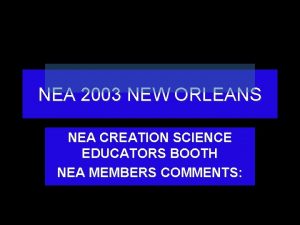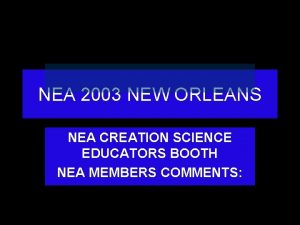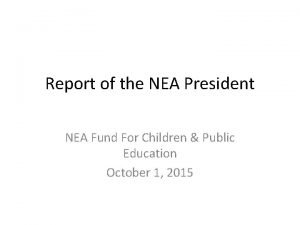Missouri NEA Kari Estes Uni Serv Director Who






















- Slides: 22

Missouri NEA Kari Estes, Uni. Serv Director

Who are We? n Local n State n National n Education Professionals – Teachers, Students, Retired, Support Staff, College Professors

What do we do? n Professional Organization n Union n Advocates A teacher’s working conditions are a student’s learning conditions.

Where are we located? n Affiliates in all 50 states n Puerto Rico n Military bases abroad n Missouri NEA has 6 offices

When did we begin? n n n NEA founded in 1857 by 43 teachers (was first called the NTA) 1870 NTA name changed to NEA Missouri was one of the founding states of the NEA - called the MSTA 1970 creation of the NEA Uni. Serv Program 1972 MSTA rejected unification and passed a constitutional amendment that disaffiliated any MSTA local that required unified membership 1973 NEA disaffilates the MSTA and the Missouri NEA is created by a handful of teachers from about a dozen school districts

Why do we exist? n Our Mission: Uniting and empowering public education advocates to shape the future of education n MNEA Core Values – Public Education and Students – Member Driven Organization – Member Advocacy A teacher’s working conditions are a student’s learning conditions.

The Benefits of Membership n Professional Growth n Advocacy Organization n Legal Services n Economic Advantages n National Association

National Association n http: //www. nea. org/index. html n National issues – ESEA aka NCLB – IDEA – Social Security – Vouchers – Tenure – Merit Pay

Professional Growth n www. mnea. org n Classrooms and Kids n Teaching and Learning n NEA Grants n Read Across America n Conferences n Networking

Member’s Only Site n http: //www. memberweb. com/memberweb 2 K 1/main 2 K 1. asp n Economic advantages n Leaders Updates n Tools you can use

Legal Services n n Professional staff assistance EEL Program – – – n ULSP Program – – n $4 million in liability coverage Civil suits Criminal charges Division of Family Services Probationary teacher non-renewal Tenure teacher contract termination Other contract or legal issues Attorney Referral Program

Advocacy Organization n Legislative – http: //www. mnea. org/capitol/ – http: //www. nea. org/lac/highered/index. html n Political Action – No dues dollars are used for political contributions! Separate, Additional, Voluntary – Candidate screening based on education issues only n Locally

The Independence Decision n 1945 - Missouri Constitution – “That employees shall have the right to organize and to bargain collectively through representatives of their own choosing. " Article 1, Section 29 n 1947 - Springfield v Clouse – Excludes public employees n 1965 - 105. 500 – Meet and confer n 1982 - Sumpter v Moberly – Meet and confer not binding

The Independence Decision Public employees have right to bargain n Don’t have to agree, if they do, binding contract n Strikes still illegal n Bargaining Framework n – Created by Legislature – By Districts n Inherent in CB – – – Exclusive, elected representative Good faith Duty of fair representation

STATUS OF COLLECTIVE BARGAINING: FOR PUBLIC SCHOOL TEACHERS Bargaining Laws K-12 Teachers * Bargaining Law In NM Was Not Renewed In 1999 No Bargaining Law But Limited Bargaining Takes Place No Bargaining Law AK MT WA ND VT NH MN OR ID ME WI SD MA WY MI NE IL NV UT NY IN PA OH CT CO KS WV MO CA KY AZ RI IA OK NM* MS TX VA TN AR AL NJ NC GA DE MD SC LA HI FL NEA COLLECTIVE BARGAINING AND MEMBER ADVOCACY (AS OF APRIL 2003) PR

STATUS OF COLLECTIVE BARGAINING: FOR EDUCATION SUPPORT PROFESSIONALS Bargaining Law Covering Education Support Professionals No Bargaining Law AK MT WA ND VT NH MN OR ID ME WI SD MA WY MI NE IL NV UT NY IN PA OH CT CO KS WV MO CA KY AZ RI IA OK NM MS TX VA TN AR AL NJ NC GA DE MD SC LA HI FL NEA COLLECTIVE BARGAINING AND MEMBER ADVOCACY (AS OF APRIL 2003) PR

Collective Bargaining Meet and Confer Bargain Public education employees and board members discuss The two parties arrive at mutually agreeable solutions in problems. The school board unilaterally makes an enforceable written agreement. decisions. When differences exist, the board makes the final decision. A neutral third party assists in resolving differences. The board may meet with as many employee groups as it Employees speak with one voice, a representative they’ve wishes, pitting one group against another. elected. Results are recommendations for the Board of Education Results are complied in a separate binding agreement to change their policies. ratified by both the teachers and Board.

What’s the Difference? MSTA filed a “friend of the court” brief jointly with the Missouri Council of School Administrators before the Missouri Supreme Court opposing the collective bargaining rights of teachers and other public school personnel. n MSTA does not have the funding or the resources to give proper representation to members. n n http: //www. mnea. org/news/Ind_Supreme Court. htm

MSTA’s Brief n Teachers and school employees might try to negotiate about… Before/after school programs (p 20) Lunch duty (p. 21) After school meetings (p. 21) Class sizes (p. 35) Textbook selection (p. 35) Retirement plans (p. 35) Definition of instructional time (p. 35) Extracurricular activities (p. 35) Calendar/schedule changes (p. 35) Length of school days (p. 35) Professional development planning (p. 35) Professional and non-certified employee evaluations (p. 35)

The Differences are Important MSTA believes that allowing the experts (you!) that work in our schools to bargain on these subjects would mean that “…the focus will move from acting in the best interest of students…” (p. 36). n By contrast, Missouri NEA believes in the judgment and commitment of the experts (you!) that work in our schools. These experts are exactly the right people to keep the focus on what is best for students. n

What do you think? n If you believe that the experts (you the teachers) need to have a legitimate voice in decision-making, n If you believe that having a binding contract is a right of professionals, Then, collective bargaining is the process by which these experts have shared decisionmaking with the local school board on local issues.

Which Would you Choose? n Which Association can better work with teachers to bargain and advocate for a fair workplace? – The Association that fought to get those rights and has believed in them all along? The association who has representatives right there with you when you need them in a meeting? OR – The Association that never believed in bargaining and fought to keep those rights from teachers? The Association that says, “I’m sorry, there is nothing we can do. ”
 Kari estes
Kari estes Dtcc 011
Dtcc 011 Apa serv alexandria
Apa serv alexandria Diff serv
Diff serv Exploit.in combo list
Exploit.in combo list Atradius serv net
Atradius serv net Expektoráció jelentése
Expektoráció jelentése Ship serv
Ship serv Int serv
Int serv Diff serv
Diff serv Y vuela como un manantial
Y vuela como un manantial Hola mi querida
Hola mi querida A veces duele tomar decisiones
A veces duele tomar decisiones A vós senhor apresentamos estes dons
A vós senhor apresentamos estes dons Parking estes park
Parking estes park Richard estes
Richard estes Http://pipedial.iespana.es/index2.htm
Http://pipedial.iespana.es/index2.htm Donde ya lo intentaste todo
Donde ya lo intentaste todo Resolva estes sistemas pelo método da substituição
Resolva estes sistemas pelo método da substituição Pai celeste criador fonte eterna de bondade
Pai celeste criador fonte eterna de bondade Cleopatra filopator
Cleopatra filopator Nea ims
Nea ims Ocr gcse pe non exam assessment
Ocr gcse pe non exam assessment
